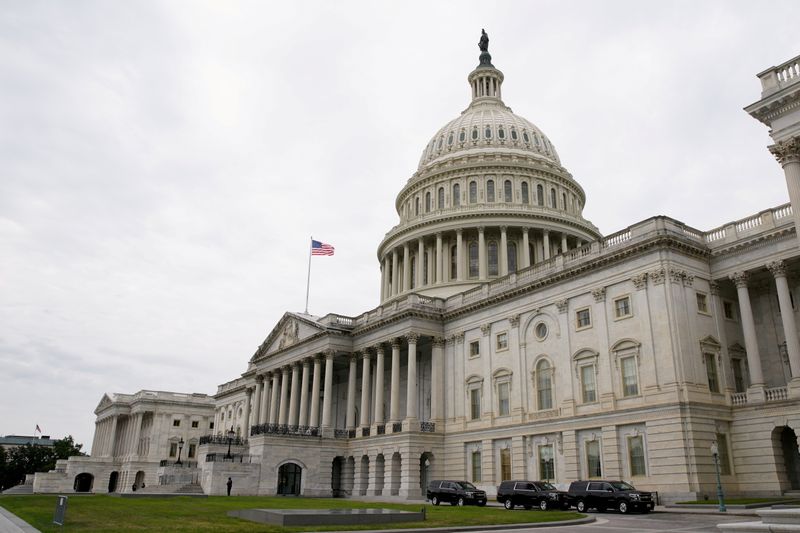WASHINGTON (Reuters) -The U.S. Congressional Budget Office on Thursday issued its long-awaited judgment that a $1 trillion infrastructure bill being debated in the U.S. Senate will be far from fully paid for, boosting U.S. budget deficits by $256 billion over a decade.
But the non-partisan budget referee agency did not count everything that the bill’s backers had hoped for, leaving a budget hole of more than $300 billion for the bill’s backers to explain.
Here are some of the key differences between “pay for” provisions listed in summaries of the bill circulated by Senate offices and the CBO’s cost estimates, based on 10-year results.
— $53 billion in unused federal unemployment funds to be returned by states. CBO did not count this as part of the offsets to infrastructure spending, saying that they had already been counted in previous estimates.
— $57 billion in new revenue that would be spurred by infrastructure investments boosting U.S. economic growth. The CBO’s report was a “static” score and did not include an estimate of the macroeconomic growth effects.
— $50 billion in rescinded 2020 COVID-19 aid appropriations. CBO said its scoring rules would only allow it to count $13.7 billion of this as savings.
— $105 billion in savings from the COVID-19 Paid and Family Leave Tax Credit, based on previous CBO projections. The agency did not include this in its cost estimate.
— $87 billion from telecommunications spectrum auctions. The CBO did not count $67 billion from a February 2021 auction and estimated future auction proceeds at $10.175 billion.
— $2.9 billion in savings from extending available interest rate “smoothing” options for defined-benefit pension plans. This would allow companies to defer tax-deductible pension contributions, raising federal revenue. CBO scored this as $404 million during the 10-year budget window.
(Reporting by David Lawder;Editing by Noeleen Walder and Stephen Coates)






















